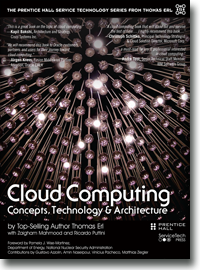Cloud Computing Patterns, Mechanisms > Basics > Virtualization Technology
Virtualization Technology
Virtualization is the process of converting a physical IT resource into a virtual IT resource.
Most types of IT resources can be virtualized, including:
- Servers – A physical server can be abstracted into a virtual server.
- Storage – A physical storage device can be abstracted into a virtual storage device or a virtual disk.
- Network – Physical routers and switches can be abstracted into logical network fabrics, such as VLANs.
- Power – A physical UPS and power distribution units can be abstracted into what are commonly referred to as virtual UPSs.
This section focuses on the creation and deployment of virtual servers through server virtualization technology.
Note
The terms virtual server and virtual machine (VM) are used synonymously throughout this book.
The first step in creating a new virtual server through virtualization software is the allocation of physical IT resources, followed by the installation of an operating system. Virtual servers use their own guest operating systems, which are independent of the operating system in which they were created.
Both the guest operating system and the application software running on the virtual server are unaware of the virtualization process, meaning these virtualized IT resources are installed and executed as if they were running on a separate physical server. This uniformity of execution that allows programs to run on physical systems as they would on virtual systems is a vital characteristic of virtualization. Guest operating systems typically require seamless usage of software products and applications that do not need to be customized, configured, or patched in order to run in a virtualized environment.
Virtualization software runs on a physical server called a host or physical host, whose underlying hardware is made accessible by the virtualization software. The virtualization software functionality encompasses system services that are specifically related to virtual machine management and not normally found on standard operating systems. This is why this software is sometimes referred to as a virtual machine manager or a virtual machine monitor (VMM), but most commonly known as a hypervisor.
This section covers the following topics:
